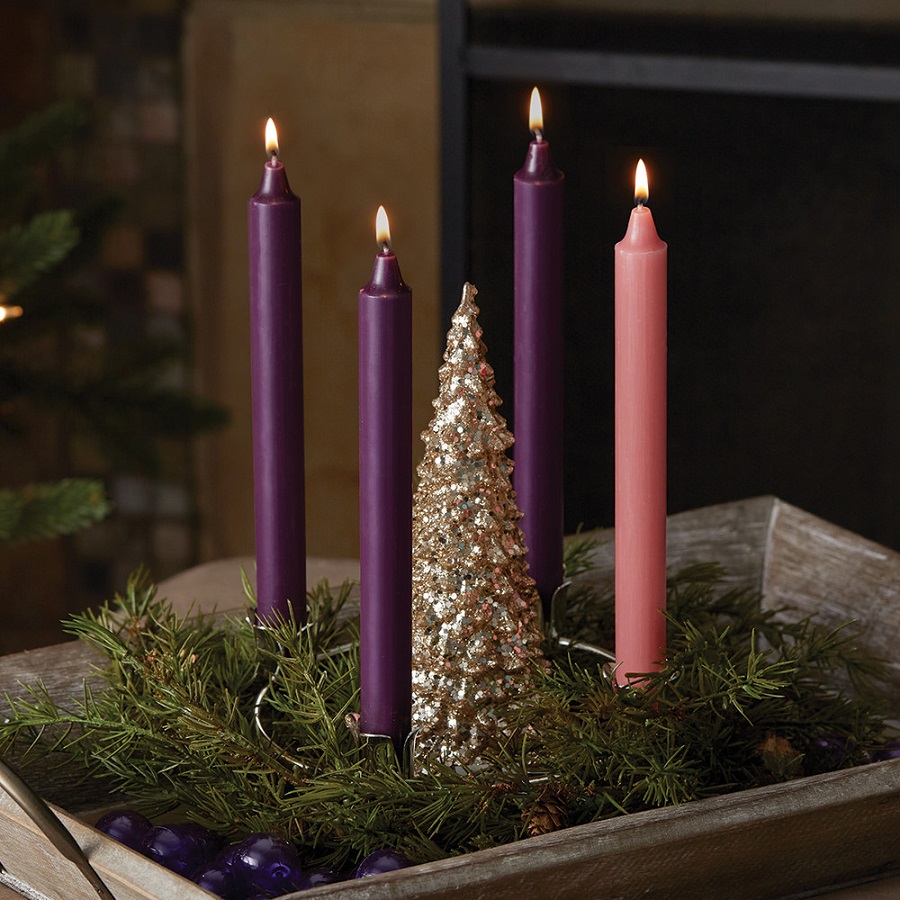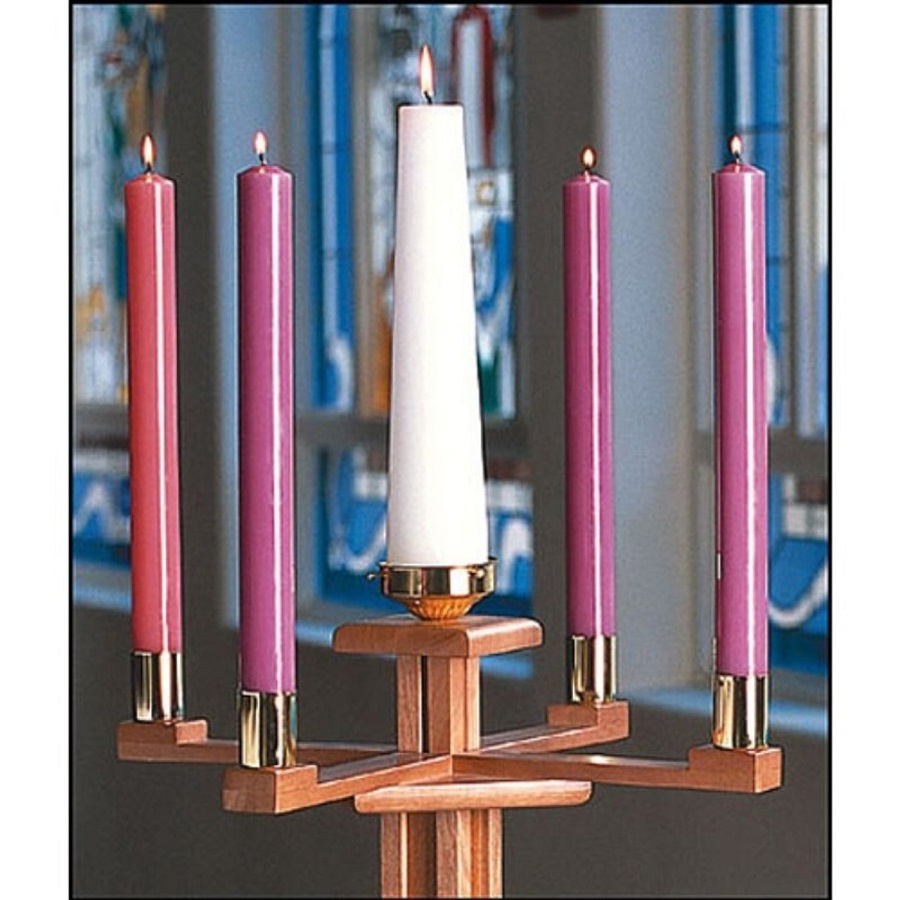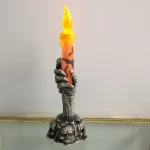Introduction to Advent and Its Significance
Advent Candles marks a period overflowing with expectation and preparation. It sets the stage for celebrating Jesus Christ’s birth during Christmas. This time beckons the faithful to ready their hearts and minds for the commemoration of this monumental event in Christian faith.
The Season of Anticipation
The Advent season is a countdown to Christmas Day. It involves a blend of traditions, prayers, and rituals aimed at spiritual readiness. This is a period brimming with hope, looking forward to the joyous birth of the Savior. It’s punctuated by the lighting of Advent candles, each carrying deep symbolism.
History and Tradition of Advent
Advent traditions root back to centuries-old practices. It began in the 4th century as a time of fasting and prayer, evolving over the years into the rich tapestry of rituals we see today. The Advent wreath is a central element of this tradition, its candles lit in succession to represent themes such as hope, peace, joy, and love. These practices serve as a tangible reminder of the spiritual journey towards Christmas.

The Advent Wreath: A Time-Honored Tradition
The Advent wreath is a cherished part of Christmas preparation. This circular wreath holds four candles representing the weeks leading to Christmas Day. Each candle has a specific meaning and symbolizes a different aspect of the Advent journey.
Components and Symbolism of the Advent Wreath
An Advent wreath is made up of evergreens formed into a circle. It usually holds four candles. The evergreens represent eternal life and God’s unchanging nature. The circular shape symbolizes completeness and God’s endless love.
The wreath’s candles are lit each Sunday before Christmas. They stand for hope, peace, joy, and love. As each candle is lit, it reminds us of the growing light of God’s presence.
The Role of Evergreens and Circular Shape
Evergreens in the wreath don’t wilt or fade. They show us that God’s love stays strong and never ends. The circle has no start or finish. It tells us that life with God has no end. Both remind us of the lasting life we find in Christ.
The Advent wreath’s evergreens and circle shape echo the hope we find in Jesus. Their presence in homes and churches invite reflection. They turn our thoughts to the eternal gift of salvation.
Understanding the Advent Candles and Their Colors
The First Candle of Hope
The first candle, called the Hope candle, is typically purple. This color stands for prayer and getting ready for something important. When we light this candle, we remember the prophets who told of Christ’s coming long ago. It shows our wait for the Savior and brings us hope.
The Second Candle of Peace
The second candle is also purple and it stands for Peace. This is the Bethlehem candle, reminding us of Mary and Joseph’s journey and our wish for peace. It calls us to quiet our hearts and minds as we prepare for Christ’s birth.
The Third Candle of Joy
The third candle is pink and signifies Joy. It’s also known as the Shepherd’s Candle. The pink color points to our joy getting brighter as Christmas gets closer. When lit, we remember the shepherds’ great happiness when angels told them about Jesus’ birth.
The Fourth Candle of Love
The fourth candle, another purple one, symbolizes Love. Often called the Angel’s Candle, it stands for the angels’ good news of Christ’s birth bringing love to the world. Lighting this candle prompts us to spread love during this holy season.
Optional: The Fifth Candle of Christ
Some wreaths have a fifth white candle, the Christ Candle, standing for Christ’s purity. We light this on Christmas Day. It shines as a sign that Jesus, the light of the world, is born. Lighting it finishes our Advent waiting and starts our Christmas celebration.

Weekly Rituals: Lighting the Advent Candles
The ritual of lighting Advent candles weekly is a cherished practice during the Advent season. Each candle lit on the Advent wreath signifies a week’s passage and embodies a particular heavenly virtue associated with the anticipation of Christmas.
First Week of Advent: The Prophecy Candle
On the first Sunday of Advent, we light the Prophecy Candle. It glows with the promise of hope. This purple candle honors the prophets, who ages ago foretold Christ’s birth. As we light it, we awaken the feeling of expectant hope within us.
Second Week of Advent: The Bethlehem Candle
The second candle, called the Bethlehem Candle, shines for peace. Also purple, its light calls us to remember Mary and Joseph’s quest to Bethlehem. We reflect on the peace Christ brings to our hearts as we prepare for his coming.
Third Week of Advent: The Shepherd’s Candle
On the third Sunday, we light the pink Shepherd’s Candle. It stands for joy. This candle’s brighter hue marks the nearing of Christmas. It echoes the joy the shepherds felt upon hearing the news of Jesus’ birth.
Fourth Week of Advent: The Angel’s Candle
The final Advent candle is the Angel’s Candle, representing love. This last purple candle reminds us of the angels proclaiming Jesus’ arrival. Its flame invites us to share love during this sacred time.

The Significance of Candle Colors in Advent
The colors of Advent candles aren’t just for show; they hold deep meanings and remind us of the spiritual themes of this season.
Purple Candles: Reflection and Anticipation
Purple candles are a call to reflect and get ready. They tell us that something important is coming and invite us to prepare our hearts. They’re often used for the first, second, and fourth weeks of Advent, symbolizing hope, peace, and love. As each candle is lit, we’re drawn into a time of prayer and expectation; looking forward to the coming of Jesus.
Pink Candle: Rejoicing and Celebration
The third week’s candle is pink — it stands for joy. This special color celebrates Gaudete Sunday, meaning ‘rejoice’. It breaks the solemnity of Advent as we get closer to Christmas, just like the shepherds who were overjoyed at Jesus’ birth.
White Candle: Purity and the Light of Christ
Some wreaths have a white candle in the center. This is the Christ Candle, usually lit on Christmas Day. It represents the pure light Jesus brings into our dark world. When we light it, our time of waiting ends, and we celebrate the birth of our Savior with joy and thanksgiving.
Reflections and Prayers Associated with Each Candle
As we light each Advent candle, we join in prayer and reflection. This ritual enriches our Advent journey.
Reflective Readings and Devotionals for Each Week
For each Advent week, specific readings help us ponder the candle’s theme. Devotionals offer further insight. They aid our spiritual preparations for Christmas.
First Candle – Hope
We might read from Isaiah, reminding us of the Messiah’s promise. It stirs hope within us.
Second Candle – Peace
Readings could include passages about Bethlehem or Mary and Joseph’s trust. They bring peace to our hearts.
Third Candle – Joy
The shepherds’ joyful discovery in Luke’s Gospel might be read. It highlights Jesus’ birth’s joy.
Fourth Candle – Love
We may reflect on the angels’ message of love. It calls us to love others.
Prayer Invocations for Lighting the Candles
Prayers are spoken as candles are lit, inviting God’s presence into our lives.
First Candle – Hope
“Lord, as we light this candle, fill us with hope for your coming. Amen.”
Second Candle – Peace
“God of peace, guide our steps as we journey towards Christmas. Amen.”
Third Candle – Joy
“Father, let this candle remind us of the joy found in your love. Amen.”
Fourth Candle – Love
“With this flame, remind us to love as you have loved us. Amen.”
These are moments for families to gather, reflect on their blessings, and share in the Advent season’s spiritual growth.
Incorporating Advent Traditions into Modern Celebrations
The Advent season is rich in symbols and traditions. Modern celebrations can embrace and adapt these practices. They make the lead-up to Christmas meaningful.
Family and Community Observances
Families light an Advent wreath candle each Sunday. They celebrate Advent at home. This act brings them together in reflection and joy.
- At Home: Families use the wreath as a centerpiece for conversation and prayer.
- In Churches: Congregations light candles in services, bonding community members in a common faith journey.
Community events often include Advent themes.
- Carol Services: Songs reflect themes of hope, peace, joy, and love found in Advent.
- Advent Calendars: These count down the days to Christmas, building excitement among kids and adults alike.
Sharing these traditions fosters togetherness. It helps pass beliefs to younger generations.
Ecumenical and Multicultural Adaptations
Advent traditions cross cultural and denominational lines. They unite people from diverse backgrounds.
- Ecumenical Services: Churches of different denominations hold joint Advent services.
- Cultural Interpretation: Different cultures infuse Advent with local customs, adding richness.
Advent’s universal message of anticipation is shared worldwide. It reminds people everywhere of the universal hope and joy offered by the Christmas season.

